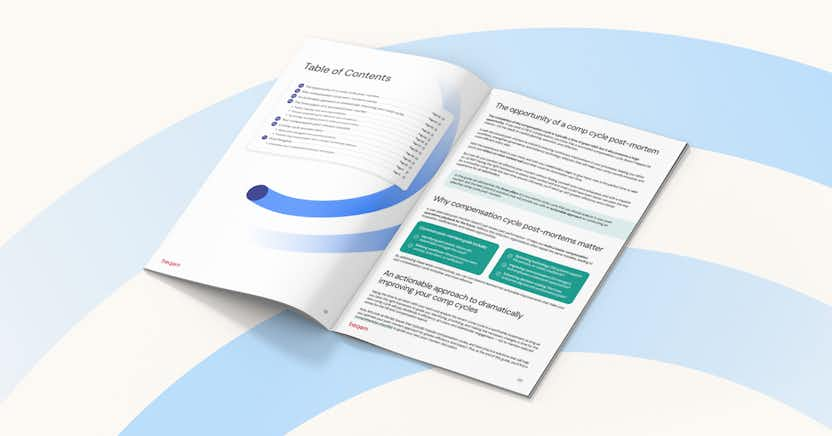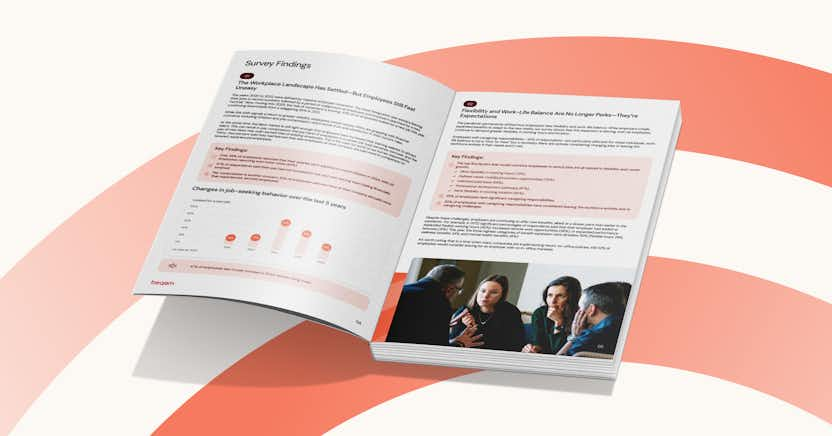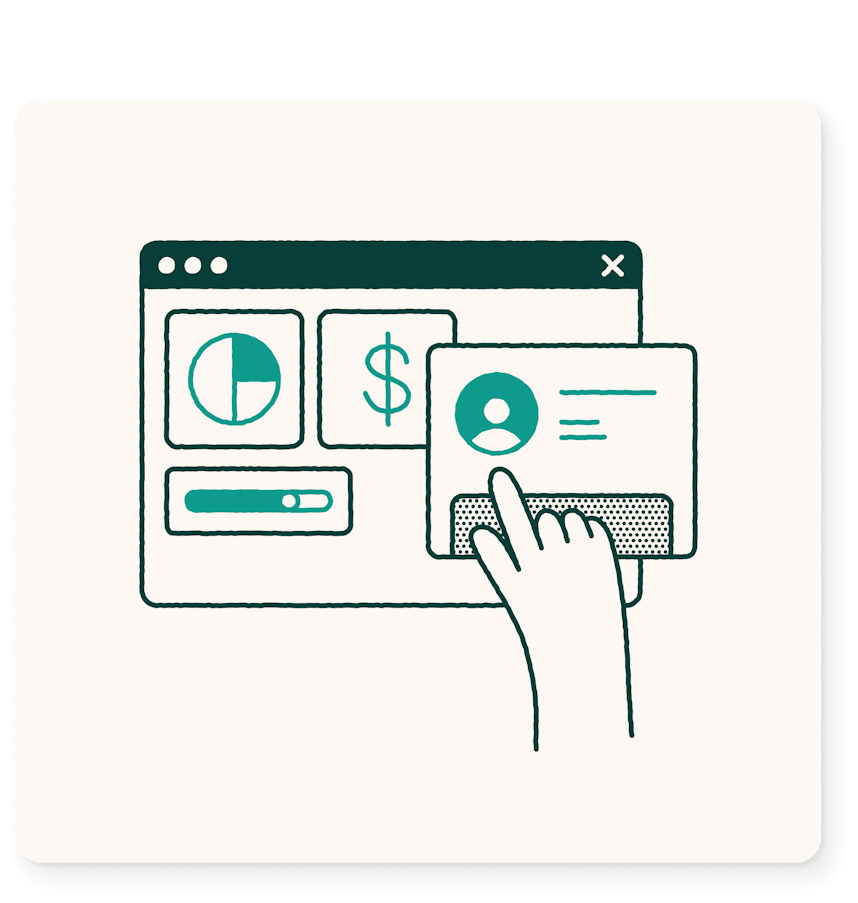Strategies for Successful Employee Development

Employee development: unlocking your workforce's potential
Effective employee development isn’t just a perk—it’s a strategic investment in your workforce. Development programs help employees strengthen skills, advance their careers, and contribute more meaningfully to the organization’s goals. A strong employee development plan aligns individual growth with organizational needs, ensuring that employees feel supported in their roles and prepared for future challenges.
This guide will cover the fundamentals of employee development, explore strategies for implementing successful development plans, and offer practical examples of programs that foster growth, loyalty, and productivity.
What is employee development?
Employee development is the ongoing process of nurturing an employee’s skills, knowledge, and career goals through structured programs and continuous support. Effective staff development strategies typically include training, mentorship, and skill-building opportunities that are tailored to individual roles and career paths. When aligned with organizational objectives, employee development can drive engagement, improve retention, and create a corporate culture that values continuous learning and adaptability.
Why employee development is crucial
A well-designed employee development strategy goes beyond upskilling—it strengthens engagement, promotes retention, and enhances organizational resilience. By investing in people development, companies can unlock a wide range of benefits that positively impact both employees and the business as a whole.
Enhancing career growth: a win-win for employees and employers
When employees are given the resources to grow in their roles, they’re more likely to feel engaged and satisfied with their career trajectory. Career development opportunities such as training programs, workshops, and cross-functional projects give employees a clear path for advancement. This focus on growth helps align personal goals with company objectives, making employee development a win-win for all.
The key to retention: investing in your employees’ growth
High turnover is costly, both financially and in terms of team stability. Investing in employee development demonstrates a commitment to individual growth, which in turn boosts loyalty and reduces attrition. When employees see that their company is invested in their future, they’re more likely to invest their own energy and loyalty back into the organization.
Maximizing potential
Employee development programs allow companies to tap into and maximize the potential of each team member. Through tailored training and role-specific learning, staff can build the expertise needed to perform at their highest capacity. This not only supports job performance but also enables employees to take on greater responsibilities, helping the organization become more adaptable and resilient.
Cultivating loyalty
Employees who feel valued and supported are more likely to stay with the organization over the long term. By consistently offering learning opportunities and acknowledging achievements, companies can cultivate loyalty and foster a strong sense of belonging. This commitment to people development ultimately builds a more cohesive, motivated workforce.
Connecting productivity and development
There’s a direct link between employee development and productivity. When team members are continually learning and refining skills, they’re better equipped to handle their responsibilities efficiently and contribute to organizational goals. Investing in targeted development initiatives can lead to measurable improvements in productivity and overall performance.
The economic advantage of focusing on employee growth
Beyond the immediate benefits of a skilled workforce, effective employee development also brings economic advantages. Well-trained employees are more productive, which can reduce operational costs and drive higher revenue. By making people development a priority, organizations can also cut down on hiring costs, as an emphasis on internal growth often translates to lower turnover and a stronger, more skilled workforce.
Designing a robust employee development plan
An effective employee development plan is grounded in clear goals and customized strategies that align with both the individual’s career aspirations and the organization’s needs. By creating structured plans that support skill-building and professional growth, companies can help employees develop in meaningful and measurable ways.
1️⃣ Vision and goals
Start with a clear vision of what the employee development plan aims to achieve. Define specific goals that align with both the company’s strategic objectives and the employee’s career interests. For example, if your organization is focusing on digital transformation, consider prioritizing skills like data analysis or technical proficiency. Setting defined, achievable goals provides a roadmap for growth and makes it easier to track progress.
2️⃣ Tailored development plans
Each employee’s path is unique, so development plans should be tailored to individual needs and strengths. Work with employees to identify areas for improvement as well as areas where they excel, creating a personalized development path that encourages growth in relevant skills. This customized approach not only makes development plans more effective but also shows employees that their individual career goals are valued by the organization.
3️⃣ Diverse development opportunities
Effective employee development plans include a range of learning opportunities, from online courses to workshops and peer mentoring. Offering diverse options ensures that employees can choose development methods that work best for their learning style. For example, younger employees might value digital learning, while more experienced staff might prefer hands-on workshops or role shadowing.
4️⃣ Feedback and evaluation
Regular feedback is crucial to any development plan. Schedule regular check-ins to assess progress, adjust goals, and provide constructive feedback. This creates a culture of open communication and reinforces the idea that development is an ongoing, evolving process. Evaluating progress also allows both the employee and the manager to celebrate milestones and adjust plans as needed.
Beyond traditional methods
For employee development to be truly effective, it’s important to go beyond traditional training sessions and explore diverse approaches that engage employees in different ways. By incorporating creative methods, organizations can provide a richer, more impactful learning experience.
Mentorship programs
Mentorship pairs less-experienced employees with seasoned professionals, providing guidance and insight that supports both career development and organizational knowledge-sharing. Mentorship programs also strengthen internal networks, building a culture of support and collaboration.
Role shadowing
Role shadowing gives employees a firsthand look at the responsibilities of different positions within the organization. This practice enhances understanding of other roles, builds empathy across teams, and can spark interest in career advancement within the company.
Lunch-and-learns
Lunch-and-learns are informal learning sessions where employees gather over lunch to discuss specific topics or skills. This approach encourages cross-functional knowledge sharing and can be used to introduce new tools, like workforce analytics or compensation management software in an accessible way.
Specialized training
Specialized training sessions focus on niche skills or technologies relevant to an employee’s role. By offering specialized programs, companies can ensure that employees stay up-to-date on industry standards and best practices. These trainings are especially valuable for roles that require deep expertise in areas like sales performance management or advanced data analytics.
Rotation programs
Rotation programs give employees the opportunity to work in various departments for a set period. These programs expand skill sets, promote cross-functional understanding, and help employees identify areas of interest, making them highly effective for broad-based staff development.
Encouraging passion projects
Encouraging employees to pursue passion projects within the organization can foster innovation and creativity. Whether it’s developing a new product idea or launching a team initiative, passion projects give employees a sense of ownership and drive engagement by allowing them to contribute to the company in unique ways.
Cross-functional initiatives
Involving employees in cross-functional initiatives allows them to work with other teams, broadening their understanding of the business. This collaboration can reveal new skills and foster a more integrated and cohesive workforce, which is essential for organizations aiming for agility and resilience.
Skill-building workshops
Workshops focused on specific skills, such as leadership, project management, or technical capabilities, can accelerate professional growth. These skill-building sessions provide hands-on learning and practical applications, equipping employees with the competencies needed for current and future roles.
FAQs
What are the four approaches to employee development?
The four main approaches to employee development include formal education (like courses and certifications), job experiences (such as role shadowing or rotation programs), mentorship and coaching, and self-directed learning. Each approach offers unique benefits, and a well-rounded development plan often combines multiple methods to suit individual needs.
What are the stages of employee development?
Employee development typically follows four stages:
- Orientation – Getting familiar with the role, company culture, and expectations.
- Skill acquisition – Learning and developing specific job skills.
- Skill application – Applying these skills in real-world scenarios to gain experience.
- Career advancement – Building leadership or specialized skills that align with long-term career goals.
How do you define employee development?
Employee development is the continuous process of supporting employees in building the skills, knowledge, and experiences that will help them succeed in their roles and advance within the organization. This includes training, feedback, and structured programs aimed at both current job performance and future career growth.
Why is employee development important for employees?
Employee development benefits employees by enhancing their skills, boosting job satisfaction, and providing a clear path for career advancement. It enables them to feel supported and valued, fostering loyalty and engagement. Additionally, development opportunities make employees more adaptable and resilient in a rapidly evolving job market.
Leveraging performance management software to enhance employee development
beqom’s performance management software empowers employee development by fostering continuous feedback, setting clear goals, and encouraging regular check-ins. The platform’s tools—like 360° feedback, coaching dashboards, and embedded micro-learnings—support managers in coaching their teams effectively while helping employees take ownership of their growth. By tracking performance data and linking it to development goals, beqom provides HR leaders with insights to drive strategic development initiatives. This unified approach to performance and development aligns employee progress with company objectives, building a culture of accountability, transparency, and growth.
Ready to elevate your employee development strategy? Connect with our team to learn how we can support your organization’s growth through effective management of performance and rewards. Contact us to get started today!















